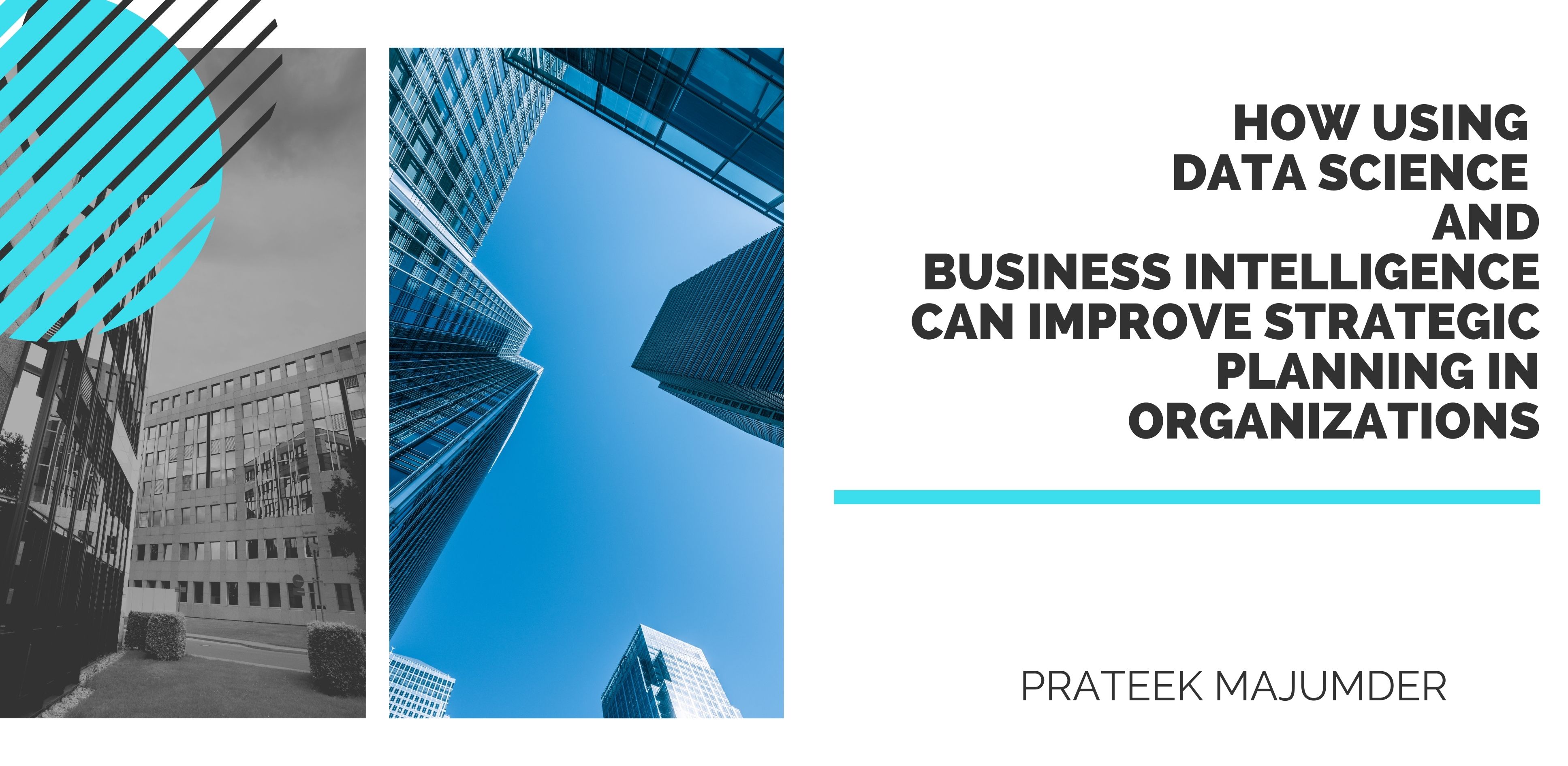This article was published as a part of the Data Science Blogathon
Introduction
Data Science deals with data and is very useful these days in analytics and Machine Learning. Data Science and Business Intelligence methods help in finding out patterns and observations which are useful and productive.
EDA explores the data and helps us discover whole new aspects of data. In the field of business, the primary equation is to maximize profits and increase the efficiency of the business. Business intelligence deals with working out through the data and drawing out useful managerial knowledge and intelligence.

The data and conclusions, used efficiently can increase the profitability of a company many times. The proper implementation helps to transform the static plan into a system that is not only efficient but is also future-ready. That is the advantage of using data science.
The system/ model is not only prepared, but it is also prepared with data and experiences of the past enabling it to work efficiently and adapt according to the required needs.
Why Data Science?
We do know that data science is a blend of tools, logics, techniques and machine learning algorithms that have the goal of decoding hidden patterns and arriving at conclusions from raw data. Data Science can be used to explain what is happening by processing the history of data.
Data science has found use in many aspects of our day to day lives, it is used to predict the weather, in stock market prediction, health sciences, finance, logistics, sales prediction and many more. The use of data science and machine learning will definitely improve the implementation of business intelligence. This will lead to improved efficiency of businesses and improve strategic planning.
Analytics can be stated as the process of shaping and transforming data for drawing conclusions and making better decisions. Often it is easy to collect a big amount of data but to apply it for meaningful purposes remains a challenge.
In a 2015 article by McKinsey, they stated that retailers using Data Analytics at a scale across the organisation could increase their operating margins by more than 60 per cent. Microsoft Power BI has millions of users now, which explains that there is an increasing trend of using data to leverage business decisions.
Data-Driven Decision Making
Data science consist of various methods and processes that support and guide the extraction of information and knowledge from raw data. Data Science if used properly has vast applications in business.
A business analyst will work with business administration and take part in EDA which is an approach to analyze datasets, summarize their main characteristics, working with the data and refining the data so that it can be put to use productively. With large amounts of data at our disposal, businesses can make better business, financial and marketing decisions.
If a business has previous data of which product sold well at which time or at which locations, they can work in a way to increase sales. Big Data helps retail outlets and fast-moving consumer goods sellers a lot. With proper data, various important decisions can be made which can improve profits.
Data-driven decision making has many applications. For example, in Finance, it might be figuring out the most cost-effective way to use cloud services, or hire new staff. Or it might be the cheapest way to promote a new product.
In the case of Marketing, with data-driven decision making, we can figure out which promotional media has the best reach and Return on Investment (ROI). In the case of overall company growth, data can be used to track customer loyalty. Past data about customers can be brought and analyzed to find out the demographics of the most loyal customers.
Data Science in Action
Data Science is applied broadly across functional areas in companies. Finance companies use it for credit scoring, trading, fraud detection and database management.
Large companies like Amazon and Walmart use data science in various fields: from marketing to supply chain management, from forecasting demands to Human Resources. Many companies have become dedicated data mining companies dealing with only data science.

Let’s deal with an example. Suppose it is a festive time in India, festive time in India shows a very high trend of fashion shopping in Indian Customers.
Say now Myntra wants to increase its sales in this season. So they will take out data of previous, say 5 years and check which products or which type of products were sold more and overstock them so that they don’t run out, hence increasing their sales.
So, what is the roadmap for analyzing large amounts of data?
We can isolate 6 steps.
- Data Collection
- Data Storage
- Data Cleaning
- Data Analysis
- Visualization
- Decision Making
Data collection, for businesses it will pass sales, past customer data, its product or services database, how well a particular product or service performs and such others.
Data Storage will be keeping track of all data, big companies do so all the time and for any emerging company, any data mining company can do so for them.
Data cleaning would comprise removing bad data and entries which would cause problems in machine learning algorithms. There are various data cleaning methods and techniques available.
The most important parts, data analysis and visualization are used to decode patterns in data and find conclusive things. The final steps would be to gather relevant conclusions from the data and arrive at a decision. The goal of using data-driven decisions in Business must to maximize profits and improve the efficiency of the business.
How it is implemented in the industry
Data is present everywhere, Data and Analytics teams at companies gather data from various sources. It might be Web Analytics, Application Databases, Customer Feedback forms, BI platforms and many more.
For example, every time we rate an Amazon purchase and give a review, we generate 2 types of data: one is the rating which is categorical data, and the review text which will help in text analytics, sentiment analysis and other NLP tasks.
Similarly, say we use a food delivery service like Zomato, we are generating a vast amount of data. This would include location data, price, our food interests, payment habits (card, Netbanking, cash on delivery etc). All this data is hugely beneficial to companies. With all the data companies possess, it comes down to effective implementation.

A real-life example would be how Walmart stocks up before any probable natural calamity. Before Hurricane Frances in 2004, Walmart executives wanted to find out what types of items they should keep in bulk. Their data teams looked through past data of purchases to find out what sort of items would sell more.
It turned out that Strawberry pop tarts and Beer are the most purchased food items in sich items. After storms, often there is a chance of power cuts and gas line disturbances for long times, Strawberry pop tarts are hugely popular as they don’t need any heating and last a long time. And beer for just chilling off. Walmart kept Floridians happy by keeping an ample supply of Pop-tarts and beer and they themselves made good profits.

UPS is one of the biggest package delivery companies in the world. UPS also leverages data to optimize package transport. Their Network Planning Tools (NPT) uses Machine Learning to solve logistics and transportation challenges, like how packages should be routed, planned and when to be delivered. The AI also suggests routes on its own. The platform reportedly has saved millions of dollars for UPS.
Good EDA helps a lot
After data has been worked on and refined, EDA can be done on that data. It is used to perform investigations on data, find patterns, discover anomalies, use statistics to arrive at conclusions. Improvements in computation have led to developments in EDA.
Better resolution displays, sophisticated user interfaces, 4K displays have all made EDA a more pleasant experience. Gone are the days, when you had to plot a bar chart on graph paper. Now you can just share your Power BI dashboard across the team.

Charts, graphs and data visuals provide valuable conclusions on how to proceed. Abundant data available these days can be applied and discoveries and insights can be obtained from the highly detailed data.
EDA is very valuable from the perspective of data science, to make certain that the results that are produced are valid and are applicable to the desired business contexts. EDA allows the systematical assessment of the contents of one data field and its interaction with other data fields, which is often the key metric representing behaviour or data the business wants to analyze or predict (eg. Customer age, customer spending, sale of a particular product in a particular area etc).
These methods help identify potential causes for behaviour, identify potentially problematic or spurious data points, and develop hypotheses to test that will shape their analysis and model development strategy.
Through EDA methods, assumptions are validated and patterns are identified, which helps in understanding the problem and model selection. This ensures high-quality analysis and validates that the data was generated the way it was expected to.
Improving Strategic Planning in organizations
Successful data mining and working with data will lead to efficient EDA, which will give better business strategies to companies, aiding in strategic management, efficient decision making, supply chain management and hence give the company a competitive advantage over others.
This will reflect in the net performance of the economically in terms of profits. Successful strategic planning in organizations aims at a desired future, goals or achieving the desired target. It is about taking a look at the wider picture and optimising the course of actions.
Armed with data, numbers, statistics, predictions and other insights, preparations are done from the aspect of Data Science. This undoubtedly gives an added advantage. Say for example, in a company if all parameters of the market and the sales of its products are predicted, they are able to aggregate their methods into one centralized corporate plan, organizational structure and a predefined budget. All this concludes into the efficient running of the company.
About me
Hi, I am Prateek Majumder, Data Science and Analytics Enthusiast.
Digital Marketing Specialist | SEO | Content Creation | Blogging
Connect with me on Linkedin
Follow me on
Thank You.
The media shown in this article are not owned by Analytics Vidhya and is used at the Author’s discretion.




